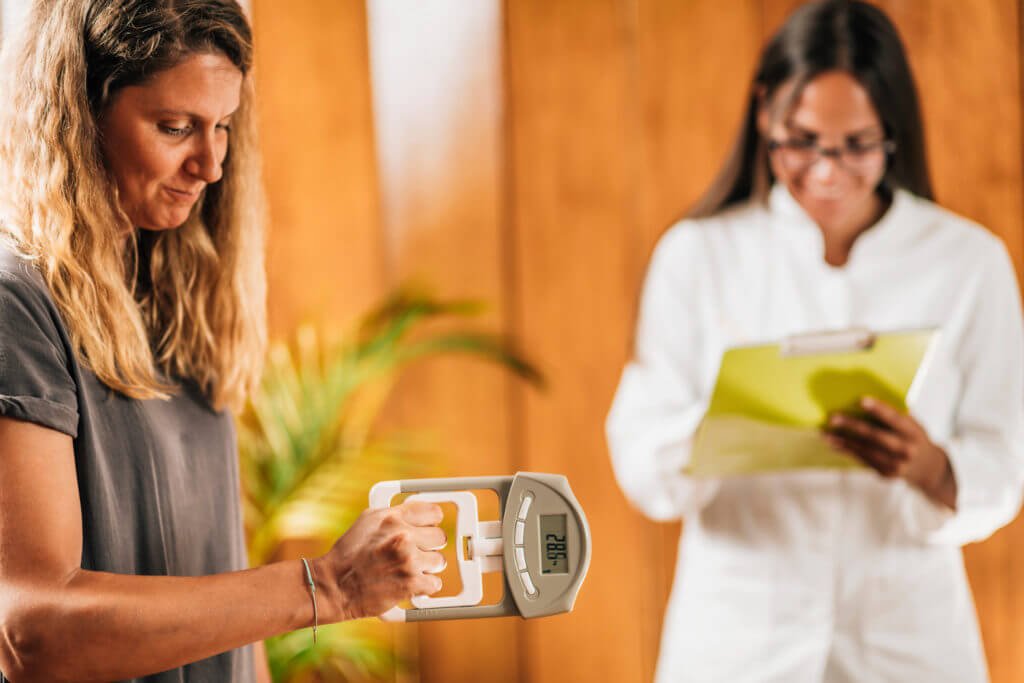JOONDALUP, Australia — Gradually losing muscle strength and mobility is simply a fact of life, as the human body can’t help but deteriorate as decades pass by. Many older and elderly adults find it difficult to perform simple tasks such as getting up, walking, and sitting down. Now, however, researchers from Edith Cowan University say these physical setbacks later in life may also serve as a warning for another sinister health concern linked to aging: dementia.
To assess the relationship between muscle function and dementia, a team from ECU’s Nutrition & Health Innovation Research Institute and Centre for Precision Health made use of data from the Perth Longitudinal Study of Aging in Women. In all, the study examined over 1,000 women with an average age of 75. Then, in collaboration with the University of Western Australia, study authors measured women’s physical prowess across multiple considerations, including grip strength and the time it took for them to rise from a chair, walk three meters, turn around, and then sit back down. This assessment is called the timed-up-and-go (TUG) test.
The group repeated these examinations after five years in an effort to monitor any loss of performance. Then, over the following 15 years, close to 17 percent of the women included in the study experienced a “dementia event,” categorized as either a dementia-related hospitalization or death.
Researchers found that lower grip strength and slower TUG both appeared to be significant risk factors for dementia, regardless of genetic risk and even lifestyle factors like smoking, alcohol intake, and exercise habits.
Women with the weakest grip strength were more than twice as likely to have a late-life dementia event in comparison to the strongest individuals. Similar relationships became apparent between TUG performance and dementia; the slowest performers in the TUG test were more than twice as likely to experience dementia than the quickest.
Could simple strength tests spot cognitive decline?
The research team also opted to analyze changes in grip strength and TUG test results after five years, with a decrease in performance also being linked with greater dementia risk. Older adults who dealt with the biggest drops in grip strength and TUG speed were roughly two and two-and-a-half times more likely, respectively, to experience a dementia event in comparison to others in the group who recorded the smallest decline in performance. Females with the largest TUG performance drop were four times more likely to have a dementia-related death than the fastest.
Senior researcher Dr. Marc Sim says grip strength, which can easily be measured using a handheld device known as a dynamometer, may one day serve as a measure of brain health thanks to the overlapping nature of cognitive and motor decline.
“Possibly due to a range of underlying similarities, grip strength may also present as a surrogate measure of cardiovascular disease, inflammation and frailty, which are known risk factors for dementia,” Dr. Sim says in a university release.

All in all, Dr. Sim believes these findings can help health professionals identify patients at risk of dementia earlier than current methods facilitate.
“Both grip strength and TUG tests aren’t commonly performed in clinical practice, but both are inexpensive and simple screening tools,” he adds. “Incorporating muscle function tests as part of dementia screening could be useful to identify high-risk individuals, who might then benefit from primary prevention programs aimed at preventing the onset of the condition such as a healthy diet and a physically active lifestyle.”
“The exciting findings were that decline in these measures was associated with substantially higher risk, suggesting that if we can halt this decline, we may be able to prevent late-life dementias. However, further research is needed in this area.”
Centre for Precision Health Director Professor Simon Laws notes there has already been encouraging progress made regarding the identification of dementia’s early warning signs.
“We are now starting to see a number of simple yet indicative screening assessments that could be combined with other biological and clinical measures to provide a holistic risk-profile for individuals presenting to their GP with, for example, memory concerns,” the researcher concludes.
The study is published in the Journal of Cachexia Sarcopenia and Muscle.
You might also be interested in:
- Exercising as a child can prevent muscle weakening condition during old age
- Scientists discover genetic mutation that leads to early onset dementia
- What the world looks like to someone living with dementia: Photos show distorted reality, even in own home

